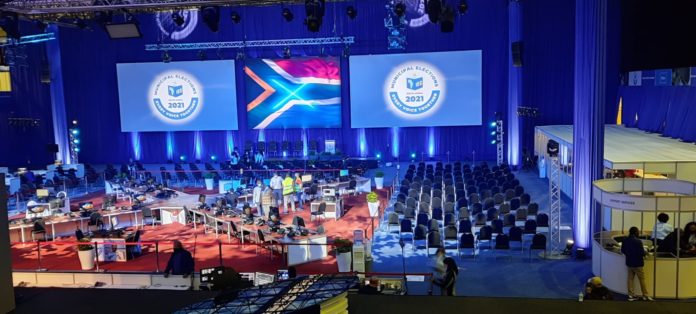In less than a week, South Africans would have cast their votes in the local government elections. Then it will be up to the Independent Electoral Commission (IEC) to count the votes and compile the results. So how exactly does the process work? The Daily Vox team took a closer look.
The IEC is in charge of the counting and results process. On November 1, voting will take place from 07:00 until 21:00. Voters are only allowed to vote if they are registered on the voters roll for a particular voting district.
RELATED:
Handy tool to find out the ward councillors candidates for #LGE in your area
The ballots
In metro municipalities, voters will receive two ballots. One is for ward councillor (first-past-the post) and the other is for the proportional representation (PR) list. If you live in a local municipality, you live in a local and a district. You will get three ballots. One is for the ward councillor, one for local council and the third is for the district council. You can find the type of municipality you live in here.
Once the voting ends, the counting will begin. The counting process depends on how many people vote in a specific ward. It could start earlier or later depending on this. The counting usually takes place at the voting station where the votes are cast. During the entire counting and results process, party agency, independent ward candidate agents and elections observers are present. They oversee the entire process for fairness and transparency and to ensure no electoral fraud.
According to the IEC, the process can be summed up in eight steps. [the below information has been taken from the IEC website]
- Verify
All ballot boxes allocated to a voting station are accounted for. Sealed ballot boxes are opened and emptied.
- Unfold
Each ballot paper is unfolded and checked for the electoral commission security stamp. Ballots without stamps are not counted. The presiding officers and other officials have the responsibility to ensure that the ballot paper is stamped before handing it to a voter. But the voter also has the responsibility to double-check.
- Sort
All ballot papers are grouped according to colours representing the type of election (District, Local/Metro and Ward). The ballots are sorted into piles according to votes for each party and each ward candidate.
- Count & bundle
The ballots are counted and bundled into packs of 100. The results are counted for each party or candidate.
- Reconcile
The results for the various parties or candidates are reconciled against the number of ballots received and the total number of ballots cast at that voting station.
- Sign results slips
Results slips are signed by the counting officer, independent ward candidate agents and party agents. A copy of the results slip is posted on the door of each voting station. The other copy
is transported to the local Electoral Commission office where it is scanned and captured in the results system. The results are also verified by independent external auditors.
- Results centres
The results centres are there for political party representatives and independents to monitor the voting, counting and results process. Parties have the opportunity to raise objections to any alleged irregularities. Other stakeholders present include the media and observers.
- Final results
The final results and seat allocation for metro and local councils are announced by
the commission within seven days of the election. District councils are formed later once the local councils have been constituted and have elected representatives to the district council.
So once the votes have been counted and tallied, the next step is looking at how the seats have been allocated for the councils.
There are three main electoral systems used around the world. There is the proportional system, constituency-based and mixed system. In South Africa, the proportional representation system is used during the national elections. However, the local elections use the mixed system. Half the seats in local and metro councils come from the PR system and half from the constituency (ward) system or first-past-the-post.
How the votes are divided
In the metropolitan municipalities, the person who receives the most votes in a ward will win a seat. They either stand as representatives of parties or as independent. Voters will also be given a ballot to vote for parties. This counts for the PR ballot. The parties will be given seats according to the percentage of votes that they received in the metropolitan area as a whole.
In local councils, the person receiving the most votes will win the seat. The candidates stand as representatives of parties or as independents. Again, there is also a vote for a political party on the PR ballot. There is also a vote in some areas for district councils.
Only 40% of the seats will be given to parties based on the votes they got on the PR ballot. The remaining 60% of seats on the district council will be allocated to the local councils in that area. Once the ward councillors have taken their places, the Municipal Structures Act deals with how to replace PR and ward councillors.
Related:
Here’s what mayors and councillors are supposed to do
Once the results have been processed and verified, the municipal councils will meet. In those municipal councils, mayors, deputy mayors, mayoral committee members, and speakers will be elected. Therefore, while we see mayoral candidates campaigning, voters do not directly elect them.
In a piece published by Open Cities Lab written by Jodi Allemeier, the process is summed up:
“Voting for different parties at ward and PR level does make sense if you really believe the ward candidate is strong and will represent your ward’s interests, while the council vote represents your metro’ interests.”
RELATED:
What do mayors and councillors earn?









